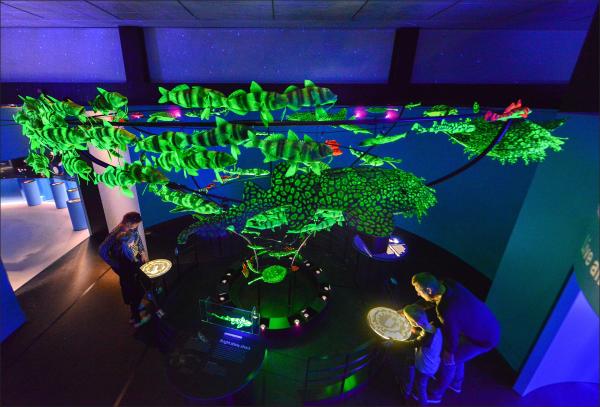
“All life on our planet depends on the oceans, yet they remain one of the last great frontiers. Today, a new generation of marine scientists with a pioneering spirit of ingenuity and adventure, and an explosion of technological and imaging advances, are creating a golden age of ocean exploration," and they are uncovering "enormously important creatures living at previously unseen ocean layers.”
– Ellen Futter, President of the American Museum of Natural History
On Tuesday, Ms. Futter and panel of scientists announced the opening of a new exhibit at this New York City institution, one that provides new information and insight about the vast bodies of water that surround us around the globe. Titled Unseen Oceans, this engaging, multi-media exhibit helps the public deepen its understanding of the deep sea, as well as the creatures that live there, many of whom are mysterious and still being discovered because they live at incredible depths that have rarely been visited.
The panel, led by John Sparks, the curator of Unseen Oceans and the curator of the museum's Department of Ichthyology, explained to the roughly 100 journalists in attendance that one of the primary reasons oceanic discovery is accelerating is due to significant advances in technology – like robotics, satellite monitoring, miniaturization and high-definition imaging.
Among the information provided by the panel and presented at the exhibit, here are a few highlights:
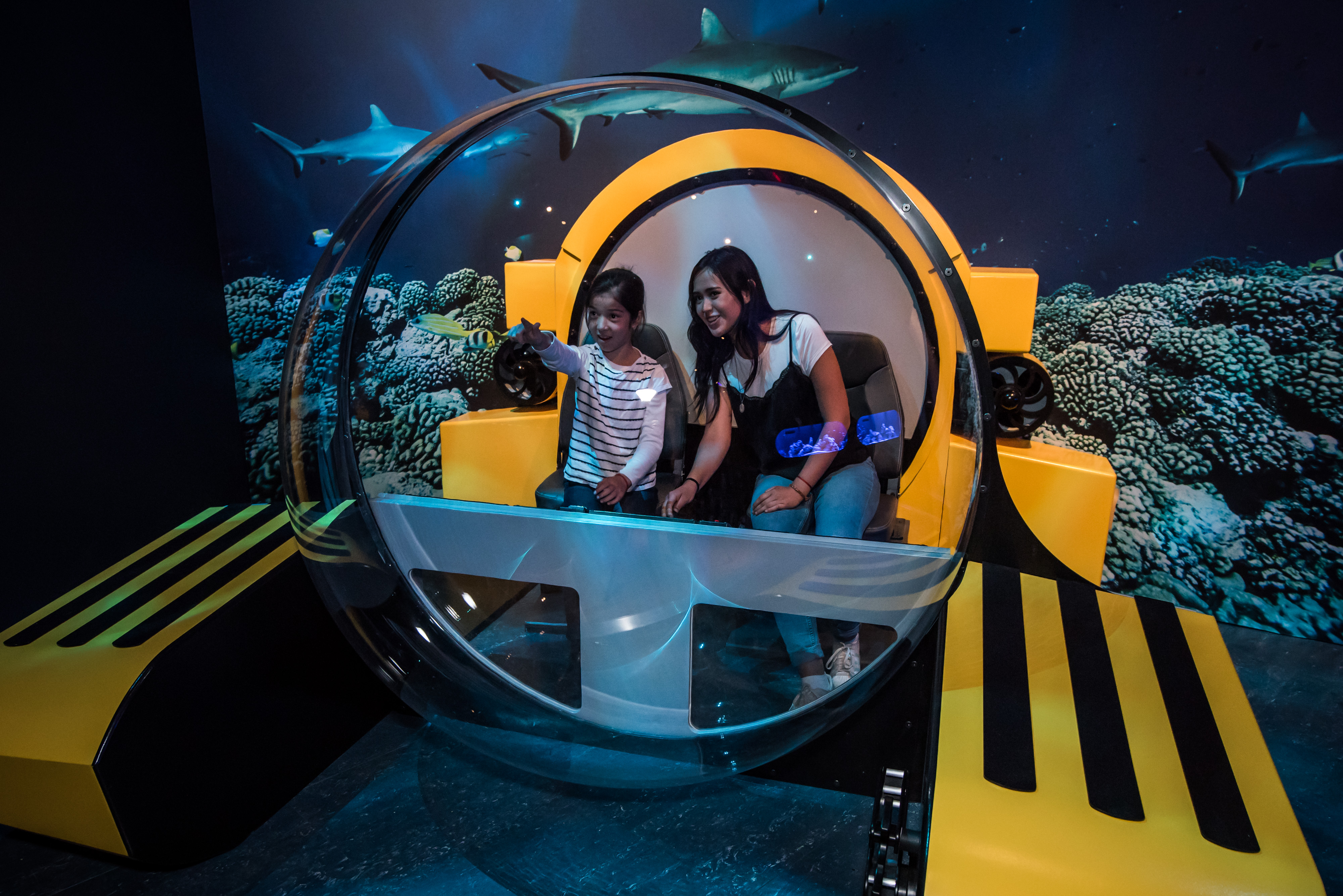 Submersible crafts, outfitted with ultra-strong acrylic spheres, can withstand pressure at 3,300 feet and provide maximum viewing of ocean life.
Submersible crafts, outfitted with ultra-strong acrylic spheres, can withstand pressure at 3,300 feet and provide maximum viewing of ocean life.
- On the ocean floor near the Galapagos Islands, located in the Pacific Ocean off the coast of Ecuador, visual and sonar mapping can now be done in 30-foot intervals, revealing aquatic wonders never before seen. Previously, the most precise mapping could only reveal details that were 6/10th of a mile apart.
- Only about 10 to 15 percent of the Earth's seafloor has been mapped with accuracy, meaning that we know the surface of Mars much better than the submerged landscapes of our own planet.
- Removable tags attached to fish transmit data — including how fast and deep a whale dives, how it moves and even the sounds that surround it — and allow scientists to better understand whales’ feeding and migratory behavior. Scientists can listen to Antarctic humpback whales singing in intense bursts as they feed on krill, and can watch the sea life swimming around the tagged animals. And when a great white shark dives — sometimes as deep as 1,200 meters (4,000 feet) — they can even receive coordinates sent via satellite.
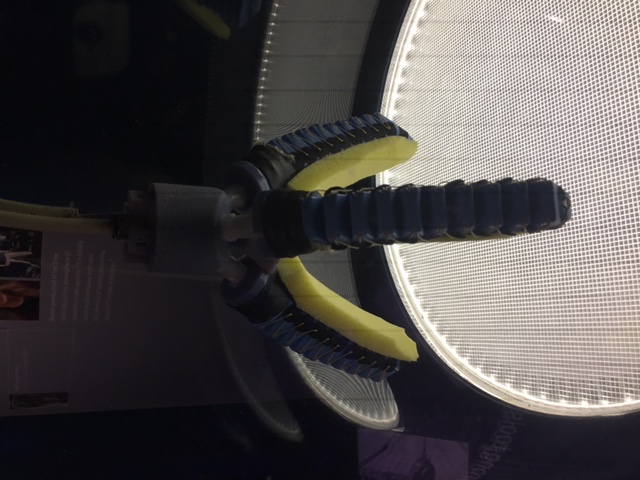 Previous versions of submersible crafts were outfitted with rigid sampling arms that could damage fragile sea life. That problem has been averted through the development of soft, quiet grippers called “squishy fingers,” which have memory foam, Kevlar laces, and hydraulically-controlled padded digits that conform gently around organisms at any depth.
Previous versions of submersible crafts were outfitted with rigid sampling arms that could damage fragile sea life. That problem has been averted through the development of soft, quiet grippers called “squishy fingers,” which have memory foam, Kevlar laces, and hydraulically-controlled padded digits that conform gently around organisms at any depth.
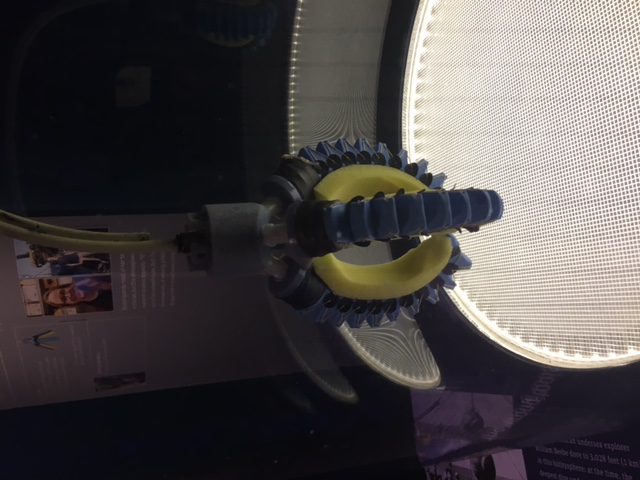 Scientists have found the widespread incidence of biofluorescence — the phenomenon by which organisms absorb light, transform it, and emit it as a different color — among marine fishes, according to Sparks.
Scientists have found the widespread incidence of biofluorescence — the phenomenon by which organisms absorb light, transform it, and emit it as a different color — among marine fishes, according to Sparks.
- Previously unknown because they lived in darkness at extreme depths, a wide variety of fish and other marine animals are actually fluorescent, glowing in startling shades of red, orange, and green when illuminated with high-energy blue light.
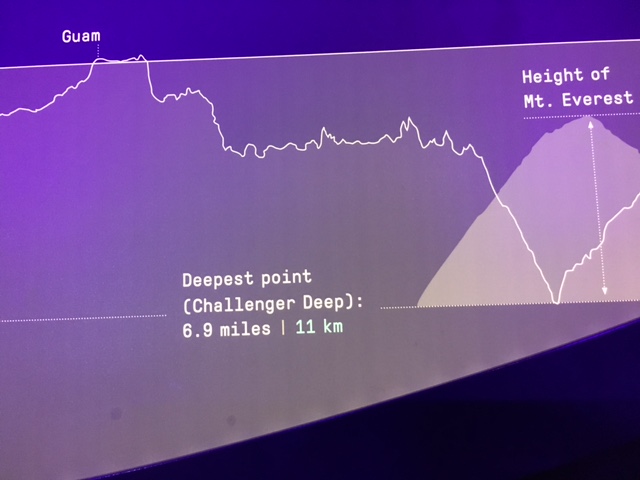 The deepest area of any ocean is so far under the water's surface that it would completely cover Mount Everest, if it could be placed there. Known as the Mariana Trench – located in the western Pacific, east of the Philippines – its deepest point is 6.9 miles or over 36,000 feet below the surface. It's 43 miles wide and nearly 1,600 miles long. By comparison, Mount Everest is just over 29,000 feet tall, or more than one mile shorter than the Trench's deepest part.
The deepest area of any ocean is so far under the water's surface that it would completely cover Mount Everest, if it could be placed there. Known as the Mariana Trench – located in the western Pacific, east of the Philippines – its deepest point is 6.9 miles or over 36,000 feet below the surface. It's 43 miles wide and nearly 1,600 miles long. By comparison, Mount Everest is just over 29,000 feet tall, or more than one mile shorter than the Trench's deepest part.
- The lower Mariana Trench is in what scientists call the hadal zone – for Hades, the Greek underworld. The darkness at 4-to-7 miles (or 6-to-11 kilometers) deep is nearly absolute, and the weight of the water above creates pressure nearly 1,000 times that at the surface. It is probably the least understood habitat on Earth.
Unseen Oceans opens to the public March 12.



